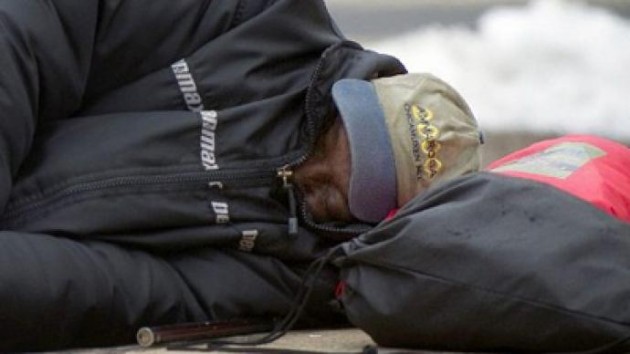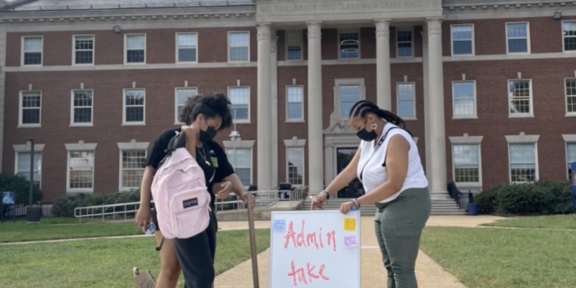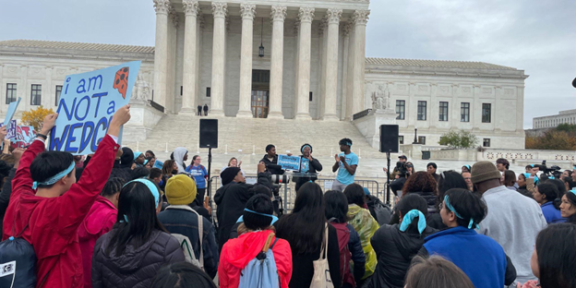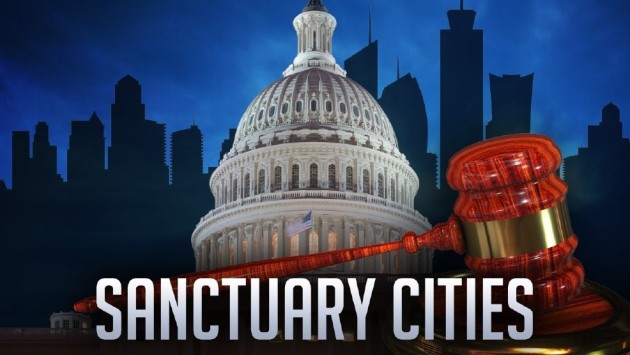
At least seven homeless men died last winter due to sleeping outside in the winter
WASHINGTON — Doors open at 3:00 p.m. daily for scores of men to secure a bed for the night at Central Union Mission, a homeless shelter in northwest Washington.
One by one, the men, young and old from all different walks of life, slowly trickled in recently through the open doors of the brick building on Massachusetts Avenue. There are 192 spots available for the homeless, and every day they fill quickly.
A few of the men were coming from work with no place to sleep for the night, but most were coming from the streets, seeking temporary refuge from the cold weather.
It is winter, and for hundreds of thousands of homeless men and women across the Washington region and the nation, finding shelter, particularly at night, can be the difference between life and death. Spend the night on the street, and they may not wake up the next morning.
Jennifer Paul is the development director of Thrive D.C., an organization that provides emergency services to the homeless, provides meals everyday and a place for the homeless to come out of the cold during the day. She knows the seriousness of this risk, which has proven to be deadly.
“When the temperature drops, people who are in shelter are encouraged to stay there” Paul said.
According to media reports, at least seven homeless people froze to death last winter in Washington. One, who was well known on Capitol Hill, died just a few blocks away from the White House. Another was found frozen to death in January in Oxen Hill, Md.
Every night in America, more than 600,000 people are homeless, according to a report by the U.S. Department of Housing and Urban Development. Nearly 7,000 of those people, the report said, live in Washington, which has the highest rate of homelessness among major cities.
The District of Columbia is one of three states that have a mandatory shelter law during hypothermia season, which opened Nov. 1. When the temperature drops below 32 degrees, government officials are required to provide emergency shelter for the homeless including individuals and families.
The city has faced hurdles in recent years with the surge of the homeless requesting shelter. Advocates and government officials are actively working to keep even more individuals and families out of the cold and into the warmth of shelters and affordable housing this year.
In the midst of these freezing temperatures, the city opens what it calls low barrier emergency shelters to house more people. Normal hours are from 7a.m. to 7 p.m. On extremely cold weather days, the shelters are open 24 hours a day until the temperatures rise above freezing.
The city also opens additional overflow shelters for persons in various recreation centers around the city. If a homeless people do not have the means to make it to one of the regular shelters, they are welcome in the overflow shelters.
At Central Union Mission, the men stood in line, patiently awaiting their turn. Each raised his hands while a staff member searched him with a metal detector for contraband or outside food.
Some retreated to the quiet dayroom where no talking is permitted. A few of the men closed their eyes while others intently watched the muted television, scripted with subtitles. A silent sadness filled the room.
Others preceded downstairs to the noisy dayroom. Talking and jokes were shared over television or a haircut from the shelter’s in-house barbers.
The Rev. James Lewis is on his 14th year as the senior director of the mission.
“The mission has always been to help the homeless, and we’ve been doing that for 130 years now,” said Lewis, a graduate of the Howard University School of Divinity.
In 1884, Lewis said, the mission was a place of refuge for the homeless men roaming the streets of Pennsylvania Avenue. Many were Civil War veterans with no place to call home.
During the Great Depression of the 1920s and 30s, it was a children’s emergency home for families to leave their children when they didn’t have the means to take care of them anymore. It is the oldest social service agency in the District of Columbia.
Since the District’s temperatures have begun to drop below freezing and the winter season is approaching, the mission’s beds have been full every night, Lewis said.
“They don’t even have to leave when they wake up,” Lewis said. “They are free to go in and out all day. We don’t want to enable homelessness, but we treat every one that walks in here as our guest.”
Erik Salmi, the director of Communications for Catholic Charities D.C., an organization that provides housing and shelter programs, works closely with different sites across the District to provide the best options for them during the winter season.
The organization partners with the city’s homeless shelters and it opens up extra sites when the temperature drops to 32 degrees.
“Counting all of our shelters around the District, each night during the winter season, we provide more than 1800 beds for the homeless,” Salmi said.
George Jones, the program manager for the Nativity Shelter for Women and for all hypothermia shelters across the District, said housing the homessless during the winter is a yearlong process.
“As a matter of fact, all summer long they’re planning for the winter,” Jones said. “The first thing they estimate is how many individuals and families they are going to have to house, and then they determine what sites they are going to use along with the transportation.”
Michael Ferrell, the executive director of the D.C. Coalition for the Homeless, saidwhen the weather gets colder, there are always more people to house.
“On an annualized basis we, house a little less than 1,000 persons during the winter season,” Ferrell said.
To protect the homeless against the winter, Thrive D.C. launched a large coat drive.
“We are making sure that the homeless has access to warm coats, hats, scarves, and sleeping bags,” Paul said. “It’s wonderful to see how many different community groups and communities are pitching in to help provide this.”
Dora Taylor, the public Information officer for the D.C. Department of Human Services said the District has traditionally been progressive in efforts to taking care of their residents and preventing homelessness.
Nine years ago before the Washington City Council passed the Dignity for Homeless Families Act, the District provided shelter for homeless people in government families. The city council and the courts halted the process because they deemed those conditions inadequate for the homeless.
“We passed a Homeless Services Reform Act, which provides that during hypothermic conditions we provide shelter with good conditions,” Taylor said. “The bill says that our families have to be sheltered in a private room with their own floor, ceiling, and a door that closes and locks.”
Actions are being taken to prevent as many homeless men, women, and families from suffering from the cold streets this winter, Taylor said.
“We did do something very progressive this year,” he said. “Instead of trying to find and allocate motel rooms for the homeless on an as-needed basis during hypothermia season, we’ve secured an entire motel this year.”
Last year the Department of Human Services housed over 800 families during the winter season. This year, they’ve already placed 142 families, nearly three weeks into the winter season.
“Eight hundred spots available this year will most likely be filled,” Taylor said. “I just pray it’s not more.










